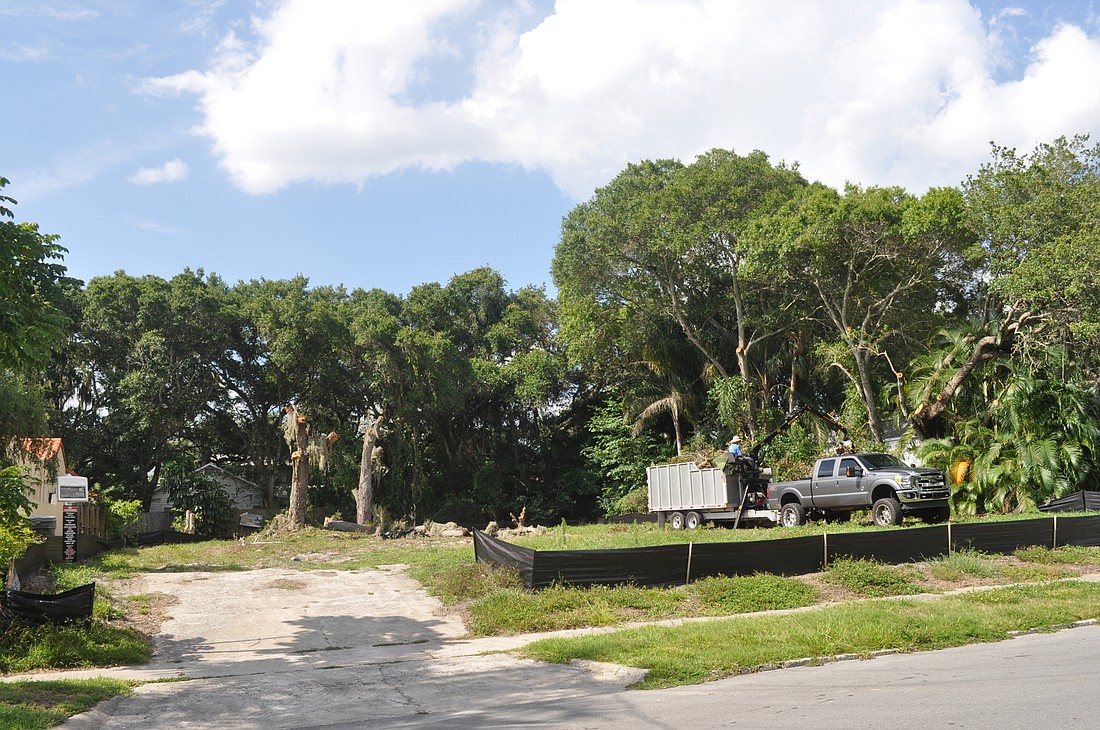- April 11, 2025
-
-
Loading

In response to dissatisfaction with the city’s tree protection ordinance, a group of citizen volunteers met for 15 months to conduct a thorough review and recommend a robust series of policy changes to the City Commission.
The robustness of those recommendations has proven to be an obstacle for the commission, which has repeatedly put off consideration of adopting the revisions that the city’s Tree Advisory Committee initially proposed in 2019.
On Sept. 8, the commission once again declined to take any major action on the committee’s recommendations, instead voting to schedule a special meeting to discuss a draft ordinance that incorporates the suggested changes.
Commissioners said they did not want to delve into the tree proposals after 10 p.m. at the Sept. 8 meeting, stating it could take hours to explore the entirety of the recommendations the committee made. Still, advocates for tree protection urged the commission to take the advice of its advisory board and adopt the changes soon.
“Moving forward with the (committee’s) recommendations would benefit all of our citizens by protecting and enhancing our tree canopy and our future health,” resident Jude Levy said.
According to a presentation at the Sept. 8 meeting, the Tree Advisory Committee identified three major themes that emerged over the course of 26 meetings from 2017 to 2019:
The committee identified a variety of strategies for addressing those themes. To improve flexibility, the group sought to streamline the permitting process for residential property owners undertaking landscaping projects and simplify the calculations that the city uses to mitigate tree removal. To promote more thoughtful tree planting, the committee created a list of “preferred” and “undesirable” trees to incentivize planting species that are likely to thrive and discourage planting invasive trees.
The group’s ultimate goal was to facilitate the creation of an urban forestry management plan, a program that would allow the city to take a proactive approach to managing its tree canopy rather than a reactive response to tree removal. In April, the city heard a presentation on options for creating a holistic, systematic strategy for managing trees, and staff recommended the creation of an urban forestry coordinator position to lead such a program. The commission took no action at that meeting.
Members of the Tree Advisory Committee acknowledged the challenge the commission faced in reviewing all 27 specific policy recommendations the group advanced. Committee member Rob Patten, who previously served as director of Sarasota County’s environmental services department, encouraged the commission to follow the guidance of the advisory board it assembled rather than get bogged down in minutia.
Michael Gilkey, a committee member and landscape architect, said it was possible to give even lengthier consideration to details regarding tree management than the committee did. He saw the recommended policy changes as an improvement over what’s currently in place but also as a means of establishing a more comprehensive tree program via an urban forestry division.
“There are a lot of variables in this that need more time than we could give in the 24 meetings we had,” Gilkey said. “It’s a stopgap for getting this urban forestry program in place.”
Despite the advocacy from committee members and some residents, not everyone embraced the proposed regulatory changes. Landscape architect and arborist Phil Smith emailed city officials a list of potential issues with the committee’s recommendations. Smith alleged the proposed changes lacked specificity in some places and created challenges for landscapers in others.
“To me, the proposed changes will make it more difficult and more costly for all involved,” Smith said in an email. “Does it really accomplish what we want or need for our city to protect and plant trees?”
Mayor Hagen Brody expressed concern about the complexity of the proposed regulations, arguing that officials should place a priority on making the tree ordinance easy to understand.
“We have to create something that achieves the goal that we all want to achieve but is also digestible for our public, because it’s the common person that has to live and work and deal with this ordinance,” Brody said.
Commissioner Jen Ahearn-Koch initially advocated for moving forward with consideration of the committee’s proposal. Acknowledging the rest of the commission’s disinterest in extending the length of the meeting, Ahearn-Koch said it was important to move forward and have a substantive conversation about the future of tree regulations in Sarasota.
“We have pushed this down the road two years now,” Ahearn-Koch said.